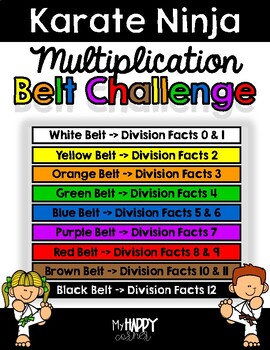Karate Ninja MULTIPLICATION Belt Challenge
- Zip
What educators are saying
Description
I am so excited to share a resource that I have created and absolutely love to use in my classroom! My goal every year is to help my students become better with their multiplication facts by building automaticity. As my teaching years grew, I tried different approaches to help my students reach this goal but none seemed to be effective or successful as a whole. So, I sat down and created something that has turned out to be pretty awesome. This product is a simple, yet fun and motivating way to get students practicing and truly learning their multiplication facts! My students beg me frequently to do Belts (as we call them in my classroom).
Karate Ninja Multiplication Belt Challenge is a product with great results. Just like karate, I split up the multiplication facts (0-12). Students are to practice their belts, and then take timed tests in an attempt to become masters. As they go from level to level, they get to sign their name on the "Wall of Fame" hence, my bulletin board display. Their goal is to reach the black belt meaning they can multiply facts from 0-12 without any help. Once, each goal is achieved a certificate can be redeemed.
Included in this product:
- OVER 180 pages of Resource available at your at finger tips!
- Decor / Bulletin Board Set
- Practice Belts
- How to Directions/Guide
- Letter to Parents
- Teacher Tracker Sheet
- Student Tracker Sheet
- Certificates
- Timed Tests
- Versions are available in Color or Black and White
If you use this product in your classroom, I'd love for you to share it on Instagram and tag ME :) so that I can see! Blessings!





